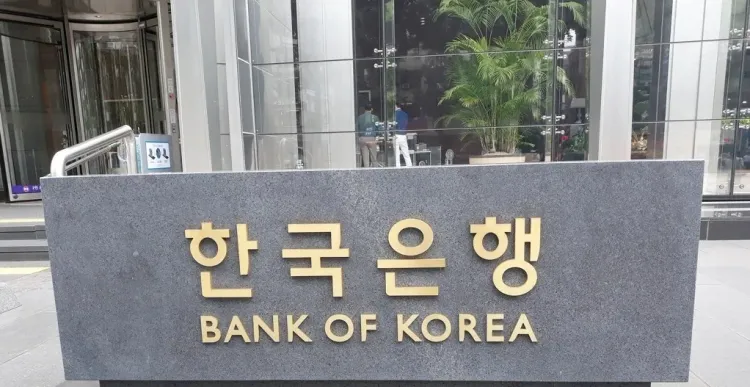Is the South Korean Economy Following Japan's Path?

Synopsis
Key Takeaways
- South Korea's economy is showing troubling similarities to Japan's past.
- Private-sector debt is nearing critical levels.
- Urgent structural reforms and innovation are necessary.
- Demographic challenges include low birth rates and aging population.
- Lessons from Japan can guide South Korea's future economic policy.
Seoul, June 5 (NationPress) The South Korean economy is increasingly resembling Japan's historical stagnation, necessitating significant structural reforms and innovation to avert enduring low growth, according to the central bank's statements on Thursday.
In its recent research findings, the Bank of Korea (BOK) noted that South Korea "is mirroring Japan's trajectory in numerous aspects," highlighting the escalating private-sector debt as a primary concern.
In 2023, the private-sector debt in Korea reached 207.4 percent of the gross domestic product (GDP), approaching Japan's peak of 214.2 percent during its asset bubble in 1994, as reported by Yonhap news agency.
Following the collapse of Japan's bubble, asset-linked debt destabilized the banking sector and resulted in distorted capital allocation, with funds directed towards low-productivity sectors such as real estate and "zombie" companies.
"Debt levels must be meticulously managed through precise macroprudential regulation, enhanced coordination with monetary policy, ongoing efforts to control household debt, and swift corporate restructuring," the report emphasized.
Both South Korea and Japan face similar demographic challenges, including declining birth rates and rapid population aging, according to the BOK.
Japan began experiencing falling birth rates and accelerated aging around the time of its asset bubble collapse, leading to diminished labor input, a decrease in potential growth, and downward price pressures due to prolonged low growth.
In South Korea, the total population began to decline in 2020, with demographic changes occurring sooner and more rapidly than in Japan, as noted by the BOK.
"To tackle these issues, it is vital to expand the labor force quantitatively and qualitatively by increasing participation from those currently outside the labor market and enhancing innovation-driven education and training," the BOK remarked.
"A more systematic and sustainable approach to utilizing foreign labor is also necessary, alongside efforts to gradually improve the birth rate," it added.
South Korea's total fertility rate, which indicates the average number of children a woman is expected to have throughout her life, was recorded at 0.75 in 2024, significantly below the replacement level of 2.1 required to maintain the population without immigration.
As of December 2024, South Korea officially transitioned into a super-aged society, with over 20 percent of its population aged 65 and older.
The BOK has cautioned that the current ultra-low birth rate could lead to negative economic growth post-2050.
"To rejuvenate our economy, we must learn from Japan's past and implement structural innovation and creative destruction to revamp our outdated economic framework, which no longer aligns with our developmental level," stated the BOK.









